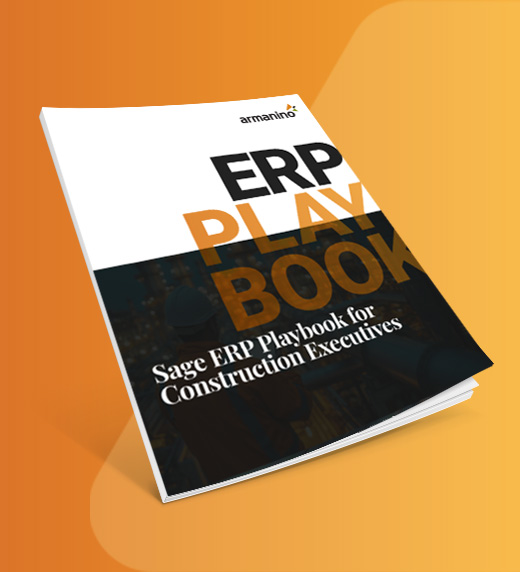
Payment applications submitted by a contractor or construction manager to a project owner are a standard part of any construction project. They are used as a tool to help project owners identify and monitor project costs, validate payments and ensure that contractors get paid fairly. However, they can be incomplete and error-prone, potentially containing duplicative/inflated charges or inaccurate data that can add risk and impact a project’s bottom line.
To prevent these problems, it’s essential for contractors to provide thorough and accurate payment applications, and for project owners to have a plan in place to effectively review them.
We know it can be hard, as a project owner, to maintain proper oversight of payment applications when you’re juggling so many moving parts throughout your project. Below are some best practices to keep in mind to help you successfully validate costs, mitigate risk and retain investor confidence.
A payment application, commonly known as a pay app, is a comprehensive invoice that includes detailed documentation on the charges incurred throughout a project. Contractors are typically required to submit monthly pay apps reflecting the work completed within that month, and project owners are typically contractually required to make the payment within 30 or 45 days.
As a construction project owner, you should outline payment application and process requirements in your contract prior to the project outset to properly manage expectations and provide complete clarity for the benefit of both you and the contractor.
Mistakes are common, even for the best contractors, with such an exhaustive document that has so many different components. Maintaining payment application best practices can help you ensure your contractors are creating organized, detailed invoices that address your construction project’s requirements and reduce your financial risk.
There are three essential components of every pay app to keep in mind: schedule of values, proper documentation and third-party payment application reviews.
Every payment application should start with establishing a well-organized and detailed schedule of values (SOV), i.e., a detailed breakdown of the summary items being built. A proper SOV depicts the amount of work completed and being requested for payment along with the percentage of completion for each segment of work that a contractor has completed. (As a good rule of thumb, as pay apps progress, no SOV line items should ever exceed 100% complete.)
You and your contractor should work together at the outset to develop a mutually agreed upon SOV. Otherwise, you could face complications throughout the process, such as difficulties verifying the percent completed for different line items, missing or inaccurate line items, or not having the information needed to approve charges by the timeline requested. Establishing the well-organized SOV outline up front and getting everyone’s buy-in will help ensure that you manage expectations and that your team and contractors are on the same page. This will save all parties a lot of headaches as your project progresses.
Keeping line items organized is another critical item to keep in mind as you craft your SOV. For one, make sure that all subcontractors and suppliers on the project have their own line on the SOV. For example, if you have four or five contractors doing site work, you want to be able to see their separate charges and how they ladder back up to the payment requested, not just one combined charge for site work. And, as your project progresses, this will help you easily and more accurately validate charges and percent completes, which in turn improves your cash flow and helps you stay on schedule.
Additionally, all insurance charges, fees and other markups should be separated out on your SOV. They should each have their own lines, again allowing you to easily validate costs and figure out any discrepancies without issue.
To keep your construction project moving seamlessly, it’s vital that payment applications are organized and supplemented with accurate, proper documentation. Inaccurate documentation or pay app errors can lead to overcharges, putting the owner at risk.
All new payment applications should start with a summary of notes from the previous payment application. This helps re-establish expectations and identify key takeaways from the last pay app reviewed.
Ensure that all pages in each payment application are properly numbered and appropriately referenced. It’s not uncommon to get a 700-page payment application that, say, on page 491 references a charge on page 67, but you’ve received an unnumbered PDF and now have to dig through hundreds of pages to figure out what’s going on. Establishing good pay app expectations in the contract can easily prevent this type of oversight and ease confusion for all parties involved.
Additionally, breaking down all the charges throughout the payment application can help you more quickly and easily validate payment. All charges should be noted with sub-totals, if applicable, and where they get charged. A payment application should also have separate lines for all contract allowances, your contractor’s general conditions costs (costs associated with overall business operations) and all contingency charges. Labor documentation should also be included when applicable so that you can make sure that the payment requested correlates with the hours worked.
A construction project is often the largest expense a company will undertake. You’re putting potentially millions of dollars on the line, and you’re juggling competing priorities, high stakeholder expectations and many moving parts. The last thing you need is to struggle with cash flow and cost overruns, miss critical opportunities for cost recovery and cost avoidance, or even potentially jeopardize project investor or stakeholder confidence. If your organization lacks the time and/or expertise to properly review your payment applications, vital information can fall through the cracks.
Getting an objective third-party payment application review can validate the appropriateness of the charges that you see. It helps ensure that you’re not overlooking any critical errors or risk vulnerability in your payment applications — and allows you and the rest of the project team to focus on other project needs rather than spending hours going over never-ending line items that may be difficult to understand.
Thoroughly completing and reviewing each payment application is critical to validate costs, retain investor confidence and ensure contract compliance throughout the duration of your construction project. By prioritizing best practices, you’ll be able to easily substantiate charges, identify errors, keep your cash flow and project payments on track, minimize financial risk and set your project up for success.
Our experts can help you properly track and control your project’s expenses, mitigate risk and implement third-party financial oversight and controls. To learn more, visit our Construction Project Cost Advisory page.


